Many months ago, Lewis and I planned a trip to China: 7 days in Běijīng, Shanghai, and Xi'an. Lewis coordinated most of the arrangements with Indus Travel, and he contacted his friend in Shanghai. I researched our hotels' neighborhoods, weather (and pollution) reports, and authentic restaurants in each region. From Indus, we got a "Tour Package", where tour guides in each city would "lead the way" through the sites. Translating was thus made easier for us, even though Lewis speaks fluent Mandarin, Cantonese, Taiwanese and some Shanghainese. We were excited about seeing the Forbidden City, the Great Wall, and the Terra-cotta Warriors! (In 2012, we saw a "traveling exhibit" of several terra-cotta warriors in NYC, and we were amazed). Before our trip, we happily re-watched the 1987 film: "The Last Emperor". (As a child, Lewis auditioned for a role in it).
Deliberately traveling "light"—to facilitate movement and avoid "baggage check-in"—we each brought a carry-on duffle bag and a messenger bag onto the plane. We wore our heaviest outfits onto the plane (to keep our luggage lighter), and Lewis donned his fedora. At JFK airport, we boarded our Air China flight and tried to imagine which other passengers might be in our "tour group". 17 hours later, I was fed up with the airline's policy of making intercom announcements about turbulence EVERY hour. Instead of speaking calmly, the woman loudly announced the turbulence, usually AFTER everyone felt the plane shake and tremble. Perhaps an illuminated sign would be less intrusive? For anyone sleeping with headphones plugged in to the plane's audio or movies, the announcements blared at full volume (despite your volume setting) and jolted you awake.
Aside from the idiot doing the announcements, everything else was professional. I was impressed with the well-dressed airline staff that we encountered during our entire trip. At each check-in and entranceway, women wore properly-fitting, unwrinkled uniforms, and nicely-done makeup. At ticket counters, men and women spoke in polite tones, gestured gracefully, and ended with a smile. Guards were helpful and respectful. Customs Checkpoint officials were quietly efficient. They even had lavatory attendants and fresh bouquets of flowers. Spiffy!
It was a stark contrast to the bad service at JFK, where the employees hollered at paying flyers as if they were cattle.
Both countries dealt with the same passengers entirely differently. The JFK restrooms smelled like stale urine and had the cleanliness of homeless shelters. You can thank the corrupt, tax-paid NYC Port Authority, which runs the airports like a mafia syndicate. (Our friend worked there supervising the airport's retailers and told us horrific stories). Perhaps Chinese companies hire Customer Service employees based on courtesy and efficiency. American companies often hire employees based on cheapness. All things considered, it may explain why U.S.A. Vice President Joe Biden described NYC's airports as resembling "a third world country". We were happy to leave it and go to a modern airport.
Lewis and I crossed half of the terrestrial globe to reach a nation formerly known as the Celestial Kingdom. China got its name from the Qin Dynasty, which was established in 221 BC and unified the warring states into Imperial China. The pronunciation of Qin sounds like China.
We flew over the Yellow Sea, which is not a racist slur; it's named for the sand of the Gobi Desert that blows into it.
Arriving in northern China, we disembarked at Beijing Capital International Airport. It is sleekly modern—as are many parts of the city. It is the busiest airport in Asia and the sixth-busiest in the world, so upgrades were prioritized for the 2008 Olympics. It is incomparably superior to the crappy airports in America's biggest and richest city because NYC airports were neglected since the 1960s. NYC collects tons of money, but it rarely reinvest in infrastructure. (That seems to be America's motto).
Here are photos of Beijing's airport in the 1960s and now...
Look at that huge, sleek line of airplane gates; it forms an efficient system! Underneath is an automated tram to carry people quickly along the entire length.
Compare China's magnificence to the inexcusable neglect of JFK Airport in America's richest city, from the 1960s to now...
NYC built greedily and uncaringly into a mess of swerving roads and disconnected airplane gates. It barely looks improved. Being in the capital of China is amazing.
On modern maps, the airport (and city) is spelled as Beijing. Our flight tickets still spelled it as Peking, which is the city's Anglicized name using the Roman alphabet. Here is the reason why. Created by the Ming Dynasty’s Yongle Emperor in 1406, Běipíng—pronounced as Pei-p’ing—means “north capital”, while Nanjing means “south capital”. Since European contact with China occurred in the south, names of places used southern Chinese dialects. Hence, China’s capital city of Peiping was pronounced as Peking. When the British controlled much of Southern China, they Anglicized/Romanized those pronunciations and publicized them around the world. Other Westerners did not try to learn the accurate Chinese names—which is typical in Western history. It was called Peking for a long time. After WWII and the Chinese Civil War, Chairman Mao Zedong proclaimed the capital of the People's Republic of China as Beiping, once again… and he eventually allowed the world to spell it as Beijing. Yet, 60 years later, American airports (ignorantly or deliberately) still print the tickets as "Peking". (Incidentally, the most popular form of theatrical Chinese opera is Peking Opera).
The airport is a marvel of design and accommodation. Seen below, the orange part contains a free rail shuttle that connects everything quickly.

All over China, building signage, highway signs, and vocal elevator announcements, are in two languages: Mandarin and English. The official language of the People's Republic of China is Mandarin. The second-most popular language is Cantonese. Many provincial dialects are also spoken, which represent China's long history spanning thousands of years.
However, Americans must get accustomed to using the metric system in China: kilometers, meters, grams. America and Micronesia are the only countries in the world that stubbornly use the imperial measurement system and refuse the (easier) metric system.
Lewis and I boarded the tram. As an indication of safety and modernity, glass doors on the platform keep the tracks clean.
Next, we were impressed by the generous-sized porte-cochère that shielded the Arrivals area. It entirely covered all four lanes of traffic.
Nothing like that exists anywhere in New York. Since their creation, NY's airports were unconcerned about providing shelter from weather to customers. Uncaringly, they remain unchanged today. Comfort is not a priority to American authorities.
At the Arrivals Terminal, Lewis and I were surprised to see a man holding a placard with our names on it. We wondered why ours were the only names? Perhaps the other members of our tour group assembled elsewhere? Or they arrived on other flights? The gentleman (and I do mean that) greeted us warmly, and he gave a nod of his head as a modern form of bowing. Knowing the Mandarin word for Hello, I said, "Nǐ hǎo", and he gave an impressed smile. His name was Frank, and his Chinese name meant Little Dragon. (In China, surnames come before first names, as a sign of respect to ancestors. So the name Frank Wang would be presented as Wang Frank). Frank introduced himself as our private tour guide! !!! We were the only 2 in the tour. Our entire trip in each city would consist of private tours! That was a great surprise to us! In addition, we had a car and driver.
Frank ushered us into the sedan and offered us bottles of chilled water. The driver put our luggage in the trunk.
*Incidentally, the word Please (Qǐng) isn't used much in China. Friends who act too polite to each other might appear rude—as if they're uncomfortable... and requests for food/services are merely said decently but without saying Please. However, Xièxiè (Thank you) is used often. Those are the words in Mandarin. In Cantonese—which is the second-largest Chinese dialect—the words are Chíng and M̀h'gōi.
A linguistic coincidence it that"Hi" in English sounds like "Yes"/"Affirmative" in Cantonese.
As in many Asian cultures, Chinese people give respectful bows to each other. The bowing occurs when greeting esteemed people, at temples, and when thanking elders. You bow slightly from the waist... sometimes more than once to show emphasis.
The new black Audi sedan zipped through lighter-than-usual evening traffic, as we became immersed in Beijing. Seen below is the name written in Chinese characters.
Frank explained that the impending international Apec Conference at Beijing spurred the government to reduce traffic (and its pollution). Businesses were ordered to close, and folks were encouraged to stay at home in the suburbs. Yet, retail/hospitality was open and ready for business. It was part illusion and part showmanship. With 30 million residents in the city, it's no wonder why! (For comparison, NYC's 5 boroughs have 8.7 million. Paris has 2 million in its city-proper.)
Founded in 1045 BC, Beijing was always an important commercial center. It began during the Zhou Dynasty (which lasted 790 years). Through the last 700 years, Beijing remained the governmental capital of China. Independent from other provinces, it is one of four directly-governed municipalities. (Another is Shanghai). They rank higher than cities and prefecture-level cities, and they act like their own provinces.
Our hotel was situated on Chongwenmen West Street, named for a gate in the City Wall that existed from the 1270s until 1963. It was replaced by Beijing's Second Ring Road. Conveniently, a subway station (Lines 2 & 5) and several bus stops are there. Unlike NYC, the Metro is wide-spread in each district, with several circular routes to link all areas—not just feed the city from the outer edges.
After 100 years, NYC uncaringly doesn't have a circular route or routes between boroughs. It merely uses the subway to feed itself... and isn't interested in connecting areas.
The hotel's area is adjacent to the City Wall Ruins Park, offering the best-preserved 1.5 km section of the old Ming-era wall, circa 1419. Since that area was directly south of China's Foreign Legations Quarter, it was ransacked during the European-instigated Boxer Rebellion invasions (looting) of 1900.
During the mere decades from 1949 to 1999, the capital rebuilt itself better than ever, and the nation improved drastically to catch-up and surpass first-world ones. As everyone knows, it was rebuffed by the USA government and ignored by America's conglomerates... and that probably helped its development. Other nations that were tainted/invaded by American industries still suffer from malnutrition, a lack of public transit, over-consumerism, a slowness to invest in infrastructure, and reliance on America. Unlike the USA, China provides free Universal Healthcare to all citizens, free education for grades 1 to 12, and free college education. It doesn't have college-student debt (but American graduates suffer from the highest debt in the world). While American poverty soars, China rescued 100 million rural residents from it. It provides a low cost of living. For example, a furnished one-bedroom apartment in central Beijing costs $800-1200 per month, and utilities (which are hugely overpriced in American cities—and unreliable) are affordable at a total of $40 per month! Outclassing any public transportation in America, Chinese cities offer affordable and modernly fast ones. Without greed, its society-focused government ensures a low income tax. Wow. It's amazing what a nation can do when it doesn't embezzle its revenue. We were excited to see it.
We stayed at the 4-star Novotel Beijing Xin Qiao. The hotel had a supreme location in the center of the capital. It was very close to Tiananmen Square and the Forbidden City.
Seen above as the red pinpoint, it was situated on Qianmen East Street, which led to the first gateway of the imperial city.
Our car parked under the hotel's porte-cochère, and a doorman greeted us. Our driver gave our bags to a bellboy, and Frank escorted us to the Front Desk. He introduced us to the "Desk Captain" (according to his name tag) to see if we could still dine in one of the hotel's six restaurants.
Most Beijing eateries close before 10pm. We were the last customers in the hotel's 1st floor restaurant. I ordered Mapo Tofu; the spiciness is always lovely to my palate. The recipe involves silken tofu, ground beef, garlic, ginger, fermented bean paste, Xiaoxing cooking wine, and scallions that are simmered in chili oil that was previously infused with Sichuan peppercorns. Lewis ordered prawns over rice, which had a delicious sauce.
Then, we went to bed, to adjust to the time zone and awake refreshed. We were due to meet Frank at 8am, the next morning.
The hotel provided bathrobes and slippers for us. To be clean at home, Chinese people remove their shoes indoors. We agree with that, and we do it at home in NYC. Despite it being sanitary, it is considered abnormal in America, where people walk on the filthiest pavement and then wear their shoes inside... often putting them on furniture and beds! We prefer Asian sensibilities.
The hotel also featured a hot-spring spa and a 24-hour gym: nice ways to invigorate yourself.
We woke up in the year 4711 in the Chinese calendar. While the world uses a calendar that was calculated by a Catholic pope in 1582, older societies, such as the Chinese, Bengali, and Jews, keep theirs for tradition. China's ancient calendar has 12-13 months and zodiac signs, but it relies on lunar and solar orbits and has a new cycle every 60 years. That's mesmerizing.
Regarding the Chinese zodiac, people are assigned to an animal and an Earth element: earth, water, wood, metal, fire. Lewis is the sign of the Earth Horse: energetic, enthusiastic, smart, agile, social, and eager for results. I am a Fire Snake, the most sociable and lively of all the snakes: charming, wise, passionate, well-respected as leaders, intelligent, adventurous, humorous, fast thinkers, and can fully express themselves in tales. (Hence, my blog!) In Western astrology, I am a Leo (Lion) and a fire sign, too.
Our room reservation qualified us to enjoy breakfast on the top-floor "Premier Lounge". It served 98% of the foods that were offered at the hotel's complimentary breakfast in the ground-floor restaurant buffet. But it was tidier and more peaceful up there. Chaffing dishes contained crispy bacon, assorted sausages, omelets, perfectly-flaky croissants, pastry, noodles, and curries. We loved the freshly-squeezed pulpy juices, and we appreciated the doting attendants who seemed happy with their jobs. They dutifully refilled our juice glasses and removed dirty dishes when we got more food. A cheery waitress asked what types of warm beverage we wanted, and we opted for tea. Their jasmine tea was amazing and fragrant.
That day, we had a different car and driver, because of the government's efforts to keep the city tidy. Cars with license plates ending in odd numbers could be used on certain days, and even numbers on others.
We chatted with Frank to understand "daily life" in China, as compared to deteriorating life in the USA. We answered his questions honestly, and he appreciated our affable American charm. As a Beijing native, Frank (seen with me below), performed his current job for nine years... and he loves it!
He proudly ushered us through the gardens of the Temple of Heaven: a UNESCO World Heritage Site. China has the most UNESCO Sites in the world!
It was built during the Ming Dynasty (this is the Ming imperial seal)...
With three gables, the temple is a massive round structure atop the highest part of the land. It rises 38-meters into the air. The Emperor used it during the winter solstice to worship deities and forecast a fertile growing season for a healthy harvest. His retinue, nobles, and clerics assembled by designation below him, each one lower than the other on the tiers. The merchants and peasantry occupied the vast space surrounding the lowest circular steps.
The artistic detail of ancient Chinese construction awed us throughout our trip!
The building's hidden symbolism hints at beliefs that are more ancient than Buddhism and Taoism. Its round shape connotes a Chinese symbolism of Heaven as a circle, while it sits on a square yard, which indicates Earth.
The whole structure encompasses only one level. The lofty roof is hollow, yet it ingeniously lacks crossbeams to support itself. As was the strength of Chinese design, no nails were used to build it; it is made entirely of wood. It signified power and was a focal point from anywhere in the region.
Seen above, incense burners stand on either side of the staircase: the carved middle section was only used by the emperors to ascend.
From there, a marble path led processions down a long promenade (built to provide lots of opportunities for courtiers and generals to show off their prominent outfits).
...in the "fourth year of the Yongle Emperor"... which was 1406.
Throughout the eons of Chinese history, years were not recorded by sequential numeric standards; they were recorded as the individual years of each emperor's reign. That is why 1406 is referred to as "fourth year of the Yongle Emperor". *Lewis' maternal grandmother was conceived in 1924, while the last Emperor of China resided in the capital. Within the Forbidden City, the year was still recorded as "the 18th year of the Xuantong Emperor".
The Temple of Heaven is gorgeously ornate, colorful, symmetrical, and expansive.
Notice the types of dragons that are emblazoned on the circular and pointed roof-tiles. Details are everywhere!
The hand-painted underside of the covered zigzagging walkway was beautiful!
Despite the early hour, folks used the park for Tai Qi, Kung Fu, saber practice, mediation, board games, badminton, and gymnastics.
Bright streams of sunshine lit the ancient trees: some are 300 or 400 years old (like the one below).
With three gables, the temple is a massive round structure atop the highest part of the land. It rises 38-meters into the air. The Emperor used it during the winter solstice to worship deities and forecast a fertile growing season for a healthy harvest. His retinue, nobles, and clerics assembled by designation below him, each one lower than the other on the tiers. The merchants and peasantry occupied the vast space surrounding the lowest circular steps.
The artistic detail of ancient Chinese construction awed us throughout our trip!
The building's hidden symbolism hints at beliefs that are more ancient than Buddhism and Taoism. Its round shape connotes a Chinese symbolism of Heaven as a circle, while it sits on a square yard, which indicates Earth.
The whole structure encompasses only one level. The lofty roof is hollow, yet it ingeniously lacks crossbeams to support itself. As was the strength of Chinese design, no nails were used to build it; it is made entirely of wood. It signified power and was a focal point from anywhere in the region.
Seen above, incense burners stand on either side of the staircase: the carved middle section was only used by the emperors to ascend.
From there, a marble path led processions down a long promenade (built to provide lots of opportunities for courtiers and generals to show off their prominent outfits).
Seen below, the path went through large gateways to another tiered mound: the Earthly Mount.
Frank explained that emperors stood on the central disk and orated their proclamations. No one was allowed to stand there, except them… just like nobody else could wear yellow, or have 11 dragons along their rooftops, or eat certain foods. The number 9 was emblematic of the emperor, so the mound is encircled by nine rings.
Like many ancient cultures around the world (unknown to each other), the leader was considered a god, descended from "above". Like European monarchs—who were believed to be divinely appointed by God—Chinese emperors had godlike titles: Sons of Heaven. Unable to be punished by anyone on Earth, they were supposed to uphold the "Mandate of Heaven". They administered earthly matters on behalf of heavenly authorities. In the 1700s, visiting Jesuit missionaries compared the Emperor to France's Louis IV, nicknamed the "Sun King" (like the Greek god, Apollo). Both were fixated on etiquette (to control others) and were notoriously extravagant.
In truth, the empire began to erode in the early 1600s. Hereditarily weak emperors and effete administrations of the Ming Dynasty let the capital get besieged by warlords. In 1644, the Ming invited the Manchu of the Jin Empire into their Forbidden City to evict the warlords. However, the Manchu stayed and took over... forming their own Qing Dynasty. They continued to overrule the Han Chinese, who were 90% of the population (descendants of the great Han Dynasty begun in 206 B.C.). Just like their predecessors, the Qing got ensnared in a wastefully lavish lifestyle, and they were China's last dynasty.
Originally, Tiananmen Square was part of the Imperial City, which contained gardens, mansions for princes, imperial ancestral shrines, altars for harvests, warehouses, and Taoist temples.
When the twelfth (and last) emperor, Aisin Gioro Puyi, feebly tried to "rein in" his corrupt officials, more written records were destroyed to hide their embezzlements and larcenies. In 1911, a revolt targeted the Qing Dynasty because its citizenry believed it had lost the Mandate of Heaven. Puyi was forced to abdicate in 1912, and new government officials raided his treasury and his ancestors' tombs.
Nevertheless, restorations and donations made the Forbidden City a beautiful landmark, once again. The ancient designs and styles are impressive. Tilework and paint have exuberant colors.
Only one dome exists in the palace, and it is part of the Hall of Martial Valor. In 1662, the building contained workshops for printing and compiling books. The tiled room with the dome was used to fumigate the paper to repel insects from dwelling in the library. The dome's oculus was used for ventilation.
The quantity of statues increases, depending on the rank of the occupant.
Despite all the attention to feng shui and repulsion of evil, the founder of the Forbidden City was monstrous. He was notorious for killing opponents via the "Death of One Thousand Cuts", which also included murdering the victim's extended-family and cohabitants. Being a ruthless ruler, Zhu Di slaughtered hundreds of women during his "international housewarming party" for the Forbidden City because they displeased him. In 1421, a lightning storm ensued, striking prominent buildings and burning them down. Governmental ministers proclaimed it a sign from "above" against Zhu Di's evil actions. However, he also launched China's far-flung naval explorations and the era of its humungous Treasure Ships that outclassed European galleons. Chinese ships reached India, the Arabic peninsula, Hawaii, and the eastern shores of Africa.
The buildings' names changed with the dynasties. Until 1644, the Forbidden City was the home to the Ming dynasty. Then, the Manchus conquered and changed the names of buildings to represent "Harmony" instead of "Supremacy". Fanciful names were created, such as Palace of Earthy Purity (Empress' dwelling), Palace of Mental Cultivation (Emperor's dwelling), Pavilion of a Thousand Autumns, Gate of Divine Military Genius, Palace of Concentrated Beauty, Pavilion of Pleasant Sounds (a theatre), Pavilion of Practicing Inner Restraint, Pavilion of Picking Fragrances, Hall of Glorious Dawn, and Pavilion of the Flowering of Buddhism. Still, there are varying translations, so the Palace of Earthy Purity might be labeled as Palace of Terrestrial Tranquility.
Hierarchy was indicated by the heights of the platforms.
From that area, routes branch off towards numerous other palaces, gardens, offices, pavilions, towers, and temples.
The Inner Court has the most buildings.
Gardens are sprinkled throughout the Inner Court, accented by ancient cypress trees, fishponds, and pagodas.
Seen below, "lake rocks" were dredged up and stacked to create ornaments for a rockery and formal gardens. (Yes, they resemble lava rocks). Emperor Wanli (1573-1620) used some to make an artificial hill for a cosmology "observation" pagoda called the Hill of Accumulated Refinement. 10 meters off the ground, the pagoda was the only structure high enough to see beyond the Forbidden City. For many inhabitants, the Forbidden City was a cage that kept them isolated from the rest of the world. Sadly, some idle people got entrenched in malicious intrigues and dastardly evils.
Above, Lewis and Frank stood at the rear gate on the northern side of the palace-city. Located near the Imperial Garden, it was only used by the Emperor and his family.
Seen below, we exited through the walls via the Gate of Divine Prowess (originally called Black Tortoise Gate). Built in 1420 during the 18th year of the Yongle Emperor, it was also used by concubines entering the palace for "official selection".
Beyond it was a bridge to cross the moat. Until catapults and cannons (and foreign commerce), such fortifications were a perfect defense. Leaving the palace, we admired the view of Jingshan Park and its mighty pavilions.
Clearly a place of fascination, the palace is still adored in many award-winning television series: comedies and dramas. Therefore, a life-size replica of the Forbidden City was constructed in China as an ongoing film-set. Worldwide audiences can't get enough of those TV shows.
*Lewis made the astute observation about historic outfits in Asia: they are unique for different regions. Centuries ago, European nations copied each other and wore the same tailcoats, hats, powdered wigs, heeled shoes, and hosiery. However, during that same time, nations like China, Japan, Korea, and Mongolia retained individualistic apparel.
Departing from the Forbidden City, we asked Frank for a lunch recommendation. He happily suggested a cozy noodle-house, and we occupied a booth on the second floor. (In China, a tea shop sells tea, and a teahouse serves tea. Thusly, a noodle shop sells noodles that you cook at home, and a noodle-house serves it ready to eat). Our seats overlooked the area's tiled roofline and some red and yellow leaves of trees. Instead of tea, they offered tureens of noodle broth. Our meal was very tasty; we love hand-pulled/pounded noodles. In Mandarin, they are called Lā Miàn. Since 1504, it is a skill to create them. That skill passed to Japan, which made it its national dish: Ramen!
Frank summoned our car, and we sped to a historical hutong [pronounced "hu-tung"]: a small town of narrow alleys enclosed by a lake. Bridge access only. Hutongs are medieval-era communal towns where many families shared common kitchens and bathrooms. Once plenteous for the peasantry, few remain. China's 20th-century government razed them to build its modern city. The few in existence are renovated—yet preserve the historical appearance—and the government offers financial incentives to people who chose to live there. However, Frank indicated that younger generations prefer the thicker (soundproof) walls and conveniences of newer buildings in the cities.
Lewis decided to augment our outfits with some toasty-warm, lightweight, and affordable "puffers". Despite their down-filling, they squish into small tote bags for easy storage. They are perfect clothes for people living in apartments with small closets. They consume less space than traditional overcoats and keep you warmer. We got reversible ones that cost 372 Yuan ($60).
*Earlier, I mentioned the Royal Palace of Madrid in Spain. To see our trip to Spain, please use this link: https://halfwindsorfullthrottle.blogspot.com/2023/11/our-trip-to-madrid-spain-part-1-of-7.html
Frank explained that emperors stood on the central disk and orated their proclamations. No one was allowed to stand there, except them… just like nobody else could wear yellow, or have 11 dragons along their rooftops, or eat certain foods. The number 9 was emblematic of the emperor, so the mound is encircled by nine rings.
Like many ancient cultures around the world (unknown to each other), the leader was considered a god, descended from "above". Like European monarchs—who were believed to be divinely appointed by God—Chinese emperors had godlike titles: Sons of Heaven. Unable to be punished by anyone on Earth, they were supposed to uphold the "Mandate of Heaven". They administered earthly matters on behalf of heavenly authorities. In the 1700s, visiting Jesuit missionaries compared the Emperor to France's Louis IV, nicknamed the "Sun King" (like the Greek god, Apollo). Both were fixated on etiquette (to control others) and were notoriously extravagant.
For Americans who think that the USA is better because it never had such things, let me remind you of its Manifest Destiny. Begun in the 1810s, it was an imperialistic claim that America had a "God-given right to rule the continent from sea to sea". America's founding document, the Declaration of Independence, asserted that all men were created equal with three inalienable rights: life, liberty, and pursuit of happiness. With its typical double-crossing behavior, the USA voided its own morals to satisfy its greed. Using its Manifest Destiny, America launched a genocide against hundreds of Native American confederations, killed millions of the natives, and stole their lands. It pushed them onto other reservation lands... but took those later. It stole Texas and California from Mexico (for oil and gold), invaded and conquered Hawaii, took Puerto Rico from Spain, and enlarged itself against Canada. It bought the U.S. Virgin Islands from their previous conqueror and kept them. It battled Germany for its American Samoa islands, regardless of the natives, and it stole Guam from Spain, which had 300 years of inhabitancy.
Frank telephoned the driver, and the car zoomed to greet us with a polite honk of the horn. Our next destination was Tiananmen Square, in the heart of the capital. It has adjacency to the Forbidden City.
After 600 years, China's government is still headquartered in that area. Proudly, Frank indicated the mausoleum to China's deceased President Mao Zedong. It was built impressively less than a year after his death. It is on the site of the ceremonial South Gate to the Imperial City, circa 1406 (south was the most auspicious direction for gates). Seen below, only the emperor, empress and empress dowager were allowed to ride palanquins (sedan chairs) through it.
After 600 years, China's government is still headquartered in that area. Proudly, Frank indicated the mausoleum to China's deceased President Mao Zedong. It was built impressively less than a year after his death. It is on the site of the ceremonial South Gate to the Imperial City, circa 1406 (south was the most auspicious direction for gates). Seen below, only the emperor, empress and empress dowager were allowed to ride palanquins (sedan chairs) through it.
Now, Mao's tomb is centered on the path to the imperial palace.
The square is the 4th largest in the world. It is literally in the center of the city, and it showcases the Congress and Supreme Court buildings.
Ahead of them, historic structures are preserved from the Forbidden City. First is a mighty garrison and archery tower from 1419 named Zhengyangmen Jian Lou.
Next, is a towering gatehouse named Zhengyangmen.
Now, let's enter the world's largest palace.
First, let me describe the site of the Forbidden City. In 1271, the area held the palace of the renown Mongol emperor, Kubilai Khan. He founded the Yuan Dynasty, which defeated China's Song Dynasty. His grandfather was the infamous Genghis Khan, who invaded most of Asia. After thousands of years, they were the first non-Han Chinese people to conquer China.
First, let me describe the site of the Forbidden City. In 1271, the area held the palace of the renown Mongol emperor, Kubilai Khan. He founded the Yuan Dynasty, which defeated China's Song Dynasty. His grandfather was the infamous Genghis Khan, who invaded most of Asia. After thousands of years, they were the first non-Han Chinese people to conquer China.
The Forbidden City was built on it in 1406 by Zhu Di (known as the Yongle Emperor). He was the second ruler of the Ming Dynasty, which displaced the dilapidated Yuan Dynasty.
He wanted to establish his authority and move from Nanjing (which means Southern Capital) to Beijing (which means Northern Capital). The Forbidden City was home to China's emperors from 1407 until 1924. It has 980 buildings on 180 acres with 8,700+ rooms—not including long-lost or hidden chambers, dungeons, and treasure troves. Its original name was Purple Forbidden City, referring to the Ziwei (North) Pole Star. Until 1912, it was the arcane headquarters of a enigmatic figure of godlike status. Such a ruler governed China since 221 BC. When Westerners visited China (like Marco Polo in 1271 or Reverend Elijah Bridgman in 1830), it seemed like another planet. Nowadays, the entire palatial complex is a UNESCO World Heritage Site.
As the name implies, the Forbidden City was off-limits to everyone... unless the Emperor invited them. The palace is massive. Years ago, Lewis and I visited Madrid and toured the Spanish royal family's home. Built in 1735 with 3,418 rooms, it is the largest functioning palace in Europe. Here is a photo.
As the name implies, the Forbidden City was off-limits to everyone... unless the Emperor invited them. The palace is massive. Years ago, Lewis and I visited Madrid and toured the Spanish royal family's home. Built in 1735 with 3,418 rooms, it is the largest functioning palace in Europe. Here is a photo.
That was huge, but this was humungous! Measuring 960 meters long and 750 meters wide, it remains the biggest palace in the world.
As big as it is, the moated "city" was cradled within another walled city named Imperial City. Seen below, the Forbidden City is white, and the Imperial City is orange. It's colossal!
As big as it is, the moated "city" was cradled within another walled city named Imperial City. Seen below, the Forbidden City is white, and the Imperial City is orange. It's colossal!
Those areas were ensconced inside another walled city named Tartar City.
Seen below, a map from 1914 shows how it all looked. The whole thing is enormous!
This map from 1938 shows the layered cities.
A painting by Xu Yang in the 1750s gives more perspective of the cities within cities.
The outskirts were equipped with gargantuan guard towers like this. Some of the battlements remain.
Sensing the flabby weakness of the isolated and bloated Chinese Empire, European and American forces made repeated (illegal) infiltrations to wrest riches from China before it collapsed. They destroyed the Tartar and Imperial Cities. Where their walls stood are now thoroughfares of traffic, as seen below.
Sensing the flabby weakness of the isolated and bloated Chinese Empire, European and American forces made repeated (illegal) infiltrations to wrest riches from China before it collapsed. They destroyed the Tartar and Imperial Cities. Where their walls stood are now thoroughfares of traffic, as seen below.
In truth, the empire began to erode in the early 1600s. Hereditarily weak emperors and effete administrations of the Ming Dynasty let the capital get besieged by warlords. In 1644, the Ming invited the Manchu of the Jin Empire into their Forbidden City to evict the warlords. However, the Manchu stayed and took over... forming their own Qing Dynasty. They continued to overrule the Han Chinese, who were 90% of the population (descendants of the great Han Dynasty begun in 206 B.C.). Just like their predecessors, the Qing got ensnared in a wastefully lavish lifestyle, and they were China's last dynasty.
Originally, Tiananmen Square was part of the Imperial City, which contained gardens, mansions for princes, imperial ancestral shrines, altars for harvests, warehouses, and Taoist temples.
Parallel to the Forbidden City, a former imperial garden is used for the offices and residences of the Chinese Communist Party, Secretariat, State Council, and the office of the General Secretary (President). It is named Zhongnanhai. Consequently, after 600 years, the leader of China still resides on property of the Forbidden City. That is strong continuity.
Considering China's superpower status with the world's second-largest economy, its political leader has clout. Since 2012, that person has been Xi Jinping, who was born in Beijing. His father was in the first generation of Communist leadership to provide economic liberalization. But his father was purged and exiled during Mao's Cultural Revolution, and Xi (at age 15) was imprisoned in rural labor camps for seven years. Red Guards ransacked his home, and his sister committed suicide. He sought to improve governance from within, yet he was rejected 17 times. He began his career in China's political party in 1979, but he got a derogatory nickname "Party's Crown Prince" because of his father's prior achievements. Regardless, he influenced the nation's economy, marketplace reforms, foreign policy, technology, reduction of poverty (which he knew firsthand), and infrastructure.
*If you want to see an imperial-era "walled city" where the government still operates, you can visit the Kremlin in Moscow. The walls were constructed in the 1480s, and the Russian president lives there now.
Seen below, the north side Tiananmen Square has five bridges to the main gate: Tian'anmen Gate (which means Gate of Heavenly Peace). Frank led us across the central bridge.
For centuries, Tiananmen Gate separated the world from the Forbidden City. A portrait of President Mao adorns it.
All around the Square, we observed crisply-attired military guards in Class-A dress uniforms. They belong to the Beijing Garrison Honor Guard Battalion. The troops perform a daily Flag Raising (Changing of the Guard) Ceremony.
We saw guardsmen in duos along the main roads, and outside official buildings and landmarks all over Beijing. Never talking amongst themselves or looking idle, they were always "at attention". They briskly turned on their heel, and they properly saluted passing officers (as Al Pacino demonstrates in "The Scent of A Woman", seen in this video).
The soldiers were augmented by the Honor Guard Battalion of the People's Armed Police, which has been China's gendarmerie since 1984. They wore handsomely decorative uniforms: peaked hats with shiny visors, pristine white gloves, shined footwear, polished buttons, gold braid, stripes on their trousers, red epaulets, and immaculate white shoulder straps. They were as spiffy as the royal guards in England. It stood out against the casually sloppy posture of military guards in other places of the world who look like mere Hall Monitors. If you're going to do it, do it right.
Any cadet in the world will attest that such attributes requires training, integrity, and dedicated effort. To visitors, the lack of slouch shows respect, tradition, and a vigorous way of doing things. I overheard some Americans comment that it looked oppressive and unnecessary. I beg to differ. Despite them being the "armed police", they don't flaunt weapons. In comparison, look at the unnecessarily heavily-armed American military at Manhattan's commuter train stations. They don't wear dressy uniforms, and they are armed with tactical gear, assault rifles, handguns, burgeoning utility belts, helmets, and battle camouflage. THAT seems more "oppressive and unnecessary"... since they are merely standing in train stations.
With excitement, Lewis and I crossed the threshold of Tiananmen Gate into an austere courtyard. We traversed land that once held the Imperial City. All that remains is an Imperial Ancestral Temple (seen below) and a park.
The Imperial City's wall is long-gone, but its gate is still there: Duanmen Gate (Gate of Uprightness). It looks like this...
Finally, we saw the official entrance to the Forbidden City: the Meridian Gate. It is encased in a horseshoe-shaped gatehouse with five watchtowers that rise 12 meters into the sky. Building suspense, we walked the 250-meter distance to arrive at the towering gatehouse.
Throughout history, visitors were only permitted to enter the palace-city by foot. The central passageway was exclusive for the Emperor (and his Empress on her wedding day). The right passage was used by officials and officers, and the left one was for the royal family.
That area lets visitors cross the water and see the expanse of the palace-city's defensive walls. Those thick walls are 10 meters high, and they are surrounded by moats that are 50 meters wide.
Once inside the palatial compound, we were repeatedly amazed. It was marvelous.
The foremost courtyard is 200 meters long and 130 meters wide. To maintain good feng shui, the palace and all of its buildings face south, and a manmade River of Golden Water was created at the south end of the palace grounds. Consequently, a manmade hill of parkland called Jingshan Park was created north of the palace walls. (I'll show you later). Five bridges span the curvy river, symbolizing the five cardinal virtues of Confucianism.
The balustrades along the bridges and rivers are intricately carved with dragons and phoenixes, emblematic of the Emperor and Empress.
The paths lead to the Gate of Supreme Harmony, guarded by bronze Chinese lions.
Passing through it gives access to an imposing white marble terrace that faces the Hall of Supreme Harmony. The one-level structure holds the Throne Room, and it was the center of the Celestial Empire.
Its courtyard is the largest: 200 by 190 meters. Around it were the imperial libraries and storerooms. They contained treasures that the emperors collected or bestowed as rewards. (One such recipient was a Flemish Dutchman named Ferdinand Verbiest. In 1670, he corrected longstanding errors in the Chinese lunar calendar and was put in charge of the prestigious Imperial Office of Mathematics and the Royal Observatory. For the Emperor in 1672, he designed a steam-powered vehicle—the world's first automobile!)
Lewis was disappointed that admittance inside the main buildings wasn't permitted. Instead, we gathered under the arcades and peered inside the unlit rooms. Frank said that when he was a boy, people were allowed to wander around inside the buildings and explore. Nonetheless, public appreciation of the monument brought vast renovation and salvation for the aging WOODEN site. That's right; the buildings are entirely made of wood! China could've used iron, but they were so talented that they decided not to. China discovered how to make cast-iron in the 300s, and they used it in other structures. Cast-iron wasn't used in Europe until 1380.
Here are more fascinating tidbits. The walls do not support the double-eave roofs; 72 pillars do the work. Built centuries ago, they are mostly earthquake-proof—using engineering feats that were recently rediscovered. During construction, lumber was hauled immense distances from all over the empire. The best timber was felled in Sichuan, Guizhou, and Yunnan... 2,000 kilometers (1,240 miles) away! The largest logs were floated down rivers and the Grand Canal. Marble and stone were quarried from the far corners of China and transported over ice (to prevent friction). By order of the Emperor, a Royal Warrant was bestowed on the tile-maker that provided the flooring in 1406. That company still exists—making tiles in the same way—with kilns that worked continuously for six centuries. That is amazing!
Lewis was disappointed that admittance inside the main buildings wasn't permitted. Instead, we gathered under the arcades and peered inside the unlit rooms. Frank said that when he was a boy, people were allowed to wander around inside the buildings and explore. Nonetheless, public appreciation of the monument brought vast renovation and salvation for the aging WOODEN site. That's right; the buildings are entirely made of wood! China could've used iron, but they were so talented that they decided not to. China discovered how to make cast-iron in the 300s, and they used it in other structures. Cast-iron wasn't used in Europe until 1380.
Here are more fascinating tidbits. The walls do not support the double-eave roofs; 72 pillars do the work. Built centuries ago, they are mostly earthquake-proof—using engineering feats that were recently rediscovered. During construction, lumber was hauled immense distances from all over the empire. The best timber was felled in Sichuan, Guizhou, and Yunnan... 2,000 kilometers (1,240 miles) away! The largest logs were floated down rivers and the Grand Canal. Marble and stone were quarried from the far corners of China and transported over ice (to prevent friction). By order of the Emperor, a Royal Warrant was bestowed on the tile-maker that provided the flooring in 1406. That company still exists—making tiles in the same way—with kilns that worked continuously for six centuries. That is amazing!
*If you think that Royal Warrants are "a thing of the past", let me remind you that many current-day brands proudly brandish that recognition. Prada famously incorporates the one that was conferred upon it from the Italian monarchy in 1919 as The Official Supplier to the Royal Court; the crown is still incorporated within the logo of its modern products.
I mention that because Lewis wore his Prada backpack and used his Prada Saffiano leather wallet, during our trip.
*To see our wondrous trip to Italy, please click this link...
Despite its immensity, the Forbidden City was only intended as the "winter residence" of the royal court (and government). They occupied it for the festival seasons of November through February. For the rest of the year, they resided in other private residences and the Summer Palace, which is 540 acres.
When in residence, emperors only left the Forbidden City for a handful of reasons. Going out on a hunting trip required 500 escorts: guards, princes, and lords—all on horseback, wearing gems, silks, and precious metals. Going out for a ceremony or astrological offering necessitated a procession of drummers, trumpeters, troops, lantern carriers, incense bearers, banner holders, parasol holders, footmen carrying any household item that the Emperor might want, princes of the royal bloodline, lords, governmental ministers, palanquin bearers, charioteers, horse-drawn carriages, and a rear guard. Those thousands of people wore splendidly colorful ceremonial uniforms.
There is also no way of knowing how many treasures used to be in the Forbidden City. Those records were destroyed several times.
In the 1840s, Europe (mostly Great Britain) aggressively instigated the First Opium Wars, which provoked China to retaliate. Pretending to be innocent victims, those European nations attacked with superior weaponry. After ransacking and looting the imperial Chinese palaces, they also demanded financial compensation from China for their troubles. Treasures were looted, inventories and libraries were destroyed, and buildings were burned down.
Begun during the Second Opium Wars of 1860, French, German, and British imperial forces took parts of China to improve their own commerce.
When in residence, emperors only left the Forbidden City for a handful of reasons. Going out on a hunting trip required 500 escorts: guards, princes, and lords—all on horseback, wearing gems, silks, and precious metals. Going out for a ceremony or astrological offering necessitated a procession of drummers, trumpeters, troops, lantern carriers, incense bearers, banner holders, parasol holders, footmen carrying any household item that the Emperor might want, princes of the royal bloodline, lords, governmental ministers, palanquin bearers, charioteers, horse-drawn carriages, and a rear guard. Those thousands of people wore splendidly colorful ceremonial uniforms.
In the 1840s, Europe (mostly Great Britain) aggressively instigated the First Opium Wars, which provoked China to retaliate. Pretending to be innocent victims, those European nations attacked with superior weaponry. After ransacking and looting the imperial Chinese palaces, they also demanded financial compensation from China for their troubles. Treasures were looted, inventories and libraries were destroyed, and buildings were burned down.
Simultaneously, they encouraged the monarchy's erosion... especially during the farcical Boxer Rebellion that they staged themselves as an excuse to steal more. The USA participated.
An assassination of a loathsome German diplomat was used to start it, but proof of its premeditation by Europeans was revealed when their newspapers announced his death... three days before it happened! To disguise their deeds, they encouraged global literature to blame the elderly Empress Dowager Tzu Ann (also know as Cixi). Her death occurred in 1908 at the age of 72 (several years after the death of Queen Victoria at age 81). In her lifetime, she witnessed dozens of political coups, assassination attempts, and overthrown princes. She outlived her friends and enemies, so she was the perfect scapegoat. Being a woman, it seemed suitable to blame her longevity on seduction and treachery, instead of brains and willpower.
If you want to read about the real Empress Dowager, use this book. Lewis and I think it's one of the few biographies that unearthed the truth, instead of copying prior prejudices and falsehoods (for convenience to mask the truth). Its title uses her slanderous nickname (Dragon Lady), but the author, Sterling Seagrave, did an impressive job.
When the twelfth (and last) emperor, Aisin Gioro Puyi, feebly tried to "rein in" his corrupt officials, more written records were destroyed to hide their embezzlements and larcenies. In 1911, a revolt targeted the Qing Dynasty because its citizenry believed it had lost the Mandate of Heaven. Puyi was forced to abdicate in 1912, and new government officials raided his treasury and his ancestors' tombs.
Emperor Puyi was permitted to remain inside the Forbidden City as a prisoner, yet he lived as if the the revolution never happened. His eunuchs and courtiers treated him like divinity.
Traditions, rituals (for an empire that no longer existed), and outdated procedures continued like clockwork. Ten years passed.
Amidst deterioration and frustration, the badly-taught monarch noticed internal thievery and rashly expelled all of his 2,000 eunuchs. Certainly, the insulted servants gossiped to outsiders about the treasures that remained within the palace... and now there was nobody to guard it. Within a year, the newest warlord to rule China invaded the historic palace.
When Puyi was evicted in 1924, more looting occurred in the unprotected palace. It remained abandoned until the 1950s.
After the last emperor, China was ruled (and looted) by warlords, and the domineering one was General Chiang Kai-shek. He embezzled the most funds from America by scamming President Franklin Roosevelt. Just like the prior imperial regime, that left China vulnerable to more invaders. The 1933 Japanese invasion forced the removal of Chinese treasures from Beijing, and the Imperial Japanese Army looted what remained. In 1945, the Empire of Japan lost World War Two and surrendered inside the Forbidden City.
After the 1948 Chinese Civil War, half of the imperial collections were taken by General Chiang Kai-shek when he invaded Taiwan to establish a new nation. They are in the National Palace Museum in Taipei.
Nevertheless, restorations and donations made the Forbidden City a beautiful landmark, once again. The ancient designs and styles are impressive. Tilework and paint have exuberant colors.
On that topic, none of the buildings have chimneys. We wondered how food was cooked? The kitchens in the Forbidden City used high-quality anthracite coal, which didn't emit smoke, so there was no need to build chimneys. How did people keep warm in winter? The architects ingeniously designed the palace for that! The walls were high and thick, so it was hard for cold air to enter, because cold air remains close to the ground (and hot air rises). Secondly, they invented a ground-heating system to make the rooms warm. There are tunnels under the floors of the palaces, and they are connected with stoves (on one side) and exhaust holes (at the other side). The stoves were fueled with that aforementioned charcoal, which gave little smoke. Hence, the heated floors radiated warmth, and the warm air rose and filled the rooms. That allowed palaces to be warm and comfortable despite the cold weather outside. Consequently, there was no need to have fireplaces or chimneys inside each room. That also kept the palaces cleaner because they avoided ashes, dust, and soot (that the best European palaces suffered from because they lacked that ingenuity). As an extra comfort in the larger structures, small heating basins (braziers) with high-quality anthracite coal were provided.
Seen below, statues of dragons and mythological creatures are perched atop the roof corners to ward off evil spirits.
The quantity of statues increases, depending on the rank of the occupant.
Yellow was the emperor's color, so roofs in the palace compound were made with yellow tiles. An exception was the cluster of green-tiled buildings used by the princes.
An imperial edict decreed that green was used because the color fostered "growth".
The buildings' names changed with the dynasties. Until 1644, the Forbidden City was the home to the Ming dynasty. Then, the Manchus conquered and changed the names of buildings to represent "Harmony" instead of "Supremacy". Fanciful names were created, such as Palace of Earthy Purity (Empress' dwelling), Palace of Mental Cultivation (Emperor's dwelling), Pavilion of a Thousand Autumns, Gate of Divine Military Genius, Palace of Concentrated Beauty, Pavilion of Pleasant Sounds (a theatre), Pavilion of Practicing Inner Restraint, Pavilion of Picking Fragrances, Hall of Glorious Dawn, and Pavilion of the Flowering of Buddhism. Still, there are varying translations, so the Palace of Earthy Purity might be labeled as Palace of Terrestrial Tranquility.
Seen above, Frank guided us to the largest and tallest building: the Hall of Supreme Harmony. Its height is the equivalent of 12-stories (35 meters). Astoundingly, the edifice is built entirely of wood! Master-craftsmen did not use metal nails or joints. Due to its height, it was struck by lightning and burned down three times. (It was so time-consuming to build that a few emperors lived through their reins without using it). Thus, it is the largest surviving wooden structure in China!
Originally, it was named Fengtian Hall, which meant "obey heaven to rule". But, the first Manchu emperor of the Qing Dynasty wanted peace over his conquered lands, so he renamed it, and other halls, with the word "Harmony".
With a characteristic yellow-tiled roof and swooping corners, it is decorated with the auspicious colors of red and gold. The depictions of 13,433 dragons adorn it as paintings or figurines. It has no upper levels. It was centerstage for imperial decrees, governmental meetings, "state of the union" addresses, investitures, royal weddings, coronations, greeting foreign dignitaries, and for grand ceremonies. Its last great event was the 1922 imperial marriage for Puyi (known as the Xuantong Emperor). A central ramp is carved from a 200-ton single piece of marble—the largest carving in China: 16 meters long, 3 meters wide, and 1.7 meters thick.
That is the same weight as the ancient Egyptian obelisk that we saw in London named Cleopatra's Needle! To see it, please use this link:
It was only used by the Emperor (or his palanquin carriers)...
...to ascend to his Grand Chair of State: the Dragon Throne. Dragons were emblematic of the emperor's divine imperial power, so his seat got that sobriquet. Dragons were emblazoned on royal monuments and any object that was only used by the emperor.
The throne is the original! Looting of Imperial China began by Western Powers in the 1840s, but looting of the Forbidden City only occurred in the 1910s. Despite countless thefts, the throne from that chamber was miraculously recovered. In the 1960s, curators searched for an antique throne to make the room look good. From a furniture warehouse, they chose a finely-made one with gold-leaf and intricate woodwork... and they suddenly realized that its carved motif matched the rest of the room! Its size was perfect for the dais and the wooden screen behind it. A photograph of the room from 1900 proved that it was the original! A portrait of the Kangxi Emperor on that throne proved that the throne was made 400 years ago! It was a huge success of preservation.
It was one of the places where His Majesty had audiences with his ministers, advisors, lords, governors, clansmen, and military strategists. When addressing him, people performed a kowtow: they prostrated themselves and tapped their heads to the floor. The word kowtow means "knock head".
The first culture to deny that respect to the emperor was the British against Emperor Qianlong in 1793. Defiantly, the British ambassador insisted that the emperor bow to a portrait of King George III. That was absurd, yet imperialistic Britain viewed the non-Christian nation as inferior. Meanwhile, the Empire of China suffered from 200 years of isolationist behavior, and its cocky officials underestimated the "outside world".
Behind it is the square-shaped Hall of Middle Harmony (seen above). It was used as a "preparation space" for the Emperor and his retinue before appearing for grand ceremonies. The inside is sparse and Zenful.
Behind that is the Hall of Preserved Harmony. It was used for Imperial Examinations of the empire's best scholars. Those young scholars composed eight-part essays and took the national civil examinations in their villages. Then, they took the exams at the capital of their province. Finally, they took the exams at the nation's capital, which necessitated three days of essay-writing. There were four increasing-degrees of exams. Out of 2,000,000 men, only 300 passed the final test.
For imperial banquets, 100+ tables were erected inside, and 170+ outside. Those three buildings are the crux of the palace, and most official activities revolved around things that happened there. To witness them, thousands of attendees filled the marble tiers that encircle the buildings. They are massive.
The bollards are expertly chiseled. Drainage gargoyles dangle under each level. They are carved beautifully into dragons.
That area concludes the Outer Court, where officers and officials could congregate. North of it was the Inner Court, which had private spaces for the imperial family and the harem.
From that area, routes branch off towards numerous other palaces, gardens, offices, pavilions, towers, and temples.
The Emperor's dwelling has 32 rooms. It was not connected to the Empress' dwelling of 24 rooms. She shared several rooms with his Secondary Wife. The other "wives" lived separately from them. Yes, "other wives". Throughout history, upstanding Chinese men usually had multiple sexual relationships. As you might imagine, the aristocracy and the royal family had more.
European royalty openly had "mistresses" who acted as auxiliary wives, but they never had that title. In China, royalty acknowledged those women in straightforward ways. An Emperor's harem consisted of concubines (of 5 ranks), 4 consorts, 2 noble consorts, and an imperial noble consort. They were pampered by a team of maids (sewing, embroidery, cooking, laundry, cosmetics, gardening) and eunuchs (handymen, laborers, guards, stable boys, secretaries). Some maids were favored by the emperor and were promoted to Chosen Maid, Second-Class, or First-Class.
Palace maids who piqued the interest of a prince or emperor could get a promotion into their harems... but that often ended in envious murders by other women.
In the meantime, each concubine and consort paraded around the Forbidden City with a line of servants following them (longer lines for higher-ranking women). Their eunuchs and maids were meant to carry inconsequential items that might be needed during the stroll. Guards were there to offer protection against harassment or intrigues.
Managed by the Empress, the women also supervised the young royal princes (usually 10-14 from each emperor).
Ranked in six levels, those princes had many female partners: primary consort, secondary consort, and mistresses. In contrast, each Royal Princess who remained in the palace—and wasn't married off to a foreigner for political alliances—had only one male consort. Princesses often married into China's peerage: duke, marquis, count, viscount, and baron.
The Empress' Throne Room looked like this.
During each reign, the Empress Dowager lived nearby in the Palace of Longevity & Health. As the wife of the deceased emperor and mother of the next emperor, her seniority outranked everyone. (Chinese culture venerates older people and focuses on "ancestor worship"). Other women from previous emperors were shepherded to properties beyond the Forbidden City, or they finished their lives in nunneries.
The Empress managed the royal kitchens, tailoring, craftsmen, and workshops. The work was done by 200-500 maids and 1,500-3,000 (castrated) eunuchs. Just as it was in the ancient Roman Empire, castration was used to avoid unwanted pregnancies in the harem. Similarly, noble females underwent "foot binding", which broke young bones and curtailed the proper development of feet, so they remained tiny. Just as modern-day designers claim that uncomfortable outfits and constrictive shoes make women "glamorous", the same falsities were fed to affluent Chinese women... until the 1920s. Chauvinistically, it impaired women and prevented them from running away. *(Lewis' maternal grandmother was spared that tortuous ordeal by her brother, who defied their mother's and grandmother's foot-bidings and emphasized modernity).
That is special because European monarchies don't create separate throne rooms for their queen-consorts (wives of kings).
The Empress managed the royal kitchens, tailoring, craftsmen, and workshops. The work was done by 200-500 maids and 1,500-3,000 (castrated) eunuchs. Just as it was in the ancient Roman Empire, castration was used to avoid unwanted pregnancies in the harem. Similarly, noble females underwent "foot binding", which broke young bones and curtailed the proper development of feet, so they remained tiny. Just as modern-day designers claim that uncomfortable outfits and constrictive shoes make women "glamorous", the same falsities were fed to affluent Chinese women... until the 1920s. Chauvinistically, it impaired women and prevented them from running away. *(Lewis' maternal grandmother was spared that tortuous ordeal by her brother, who defied their mother's and grandmother's foot-bidings and emphasized modernity).
There are many red-walled corridors in the Forbidden City, intended for those servants.
Their masters always had the right to punish them, make them kneel for hours, thrash them with birch branches, or execute them. Yet, some made fortunes from their servitude and retired, forbidden to reenter the palace again.
Occasionally, the harems included male concubines for homosexual and bisexual emperors. A famous "imperial favorite" was Dong Xian. As a teenager, his beauty attracted amorous devotion and favoritism from 21-year-old Emperor Ai of the Han Dynasty. Their romance was encapsulated in the tale Passion of the Cut Sleeve: after napping together, the emperor's sleeve was under Dong, so he cut the sleeve so he wouldn't disturb his lover. At the age of 18, Dong was an official in the royal court. By the age of 22, he was commander of the armed forces. During his meteoric rise in the hierarchy, he was ennobled as a marquis, and his wife and family were given lucrative roles within the government. In the year 1 BC, Emperor Ai died suddenly at age 24, yet he decreed that Dong inherit the Throne. Soon after, records say that "Dong committed suicide" (or was forced to), and his clan was exiled while their assets reverted to the treasury.
The founder of the famous Han Dynasty, Emperor Gaozu, was fond of his "pillow companion": Jiru. Records of the Grand Historian say that the teenager didn't have talent or ability, but his looks and grace won the ruler's heart. During the four centuries of the Han Dynasty, 206 BC to 220 AD, eight emperors had male lovers or concubines. In fact, homosexuality and bisexuality were accepted during many dynasties. In the 530s BC, Duke Ling of Wei had a same-sex romance with Mizi Xia. Their relationship was so well-known that the phrase "half-bitten peach" (from them publicly sharing a peach) became a slang term for being gay. In the Warring States era, the King of Wei was known for his gay lover, Lord Longyang. General Liang Ji was married but had a male concubine, Qin Gong. During the Jin Dynasty (Former Qin), Emperor Xuanzhao (Fu Jian) had a male lover in Chang'an: a teenage prince named Murong Chong who became Emperor Wei of Western Yan in 385. The Song Dynasty (960 to 1279) had the first law against male prostitutes, yet officials, merchants, and noblemen had gay lovers. Male courtesans ("singing boys") remained popular across China.
In the 1500s, regions of Fujian, Shanxi, Jiangnan, and Beijing had abundant gayness; Fujian had a policy of male marriages. During that era, Hu Tianbao was a deity for gay relationships. Since the 1600s, Catholic Europeans imported homophobia to China and scorned gay men as an unnatural perversion. The Ming Dynasty banned non-monetized anal sex, and legal issues endured through the final Qing Dynasty. Nonetheless, an elegant home remains in Beijing that was built by Emperor Qianlong of the Qing Dynasty for his male lover named Heshen: a 22-year-old imperial guard in 1772 who became adored by the richest man in China. Within one year, he was unreasonably promoted to the Ministry of Revenue and then Grand Councilor. Alas, the emperor became lazy, and the lover became openly corrupt to engulf tax revenue and public funds (similar to NYC from 1850 to now). When the emperor died in 1799, Heshen was condemned to death because his own wealth exceeded the national treasury.
[In the 1990s, China's "Opening Up" reforms allowed homosexuality to escape its taboo persecution. It was legalized in 1997 (yet America "Land of the Free" didn't legalize it until 2003). The government remains neutral on citizens' sexuality].
*To see another prominent gay romance in an ancient culture, please use this link: https://halfwindsorfullthrottle.blogspot.com/2015/10/the-arabic-patron-of-knowledge-was-gay.html
The Jiaotai Hall contained the emperor's jade seals that embossed documents to express his authorization. Now scattered around the world, they are hugely valuable to art collectors. The hall also housed the imperial timekeeping collection: mechanical clocks and a ceramic water clock that were gifted from European monarchies or commissioned by imperial families. The tallest chiming clock was 6-meters.
Nearby, the emperor's study (office) was situated within proximity to where the princes learned their lessons.
The chief eunuch was called a gong-gong, and he was the majordomo in the palace and acted as the personal attendant/representative of the emperor. His office was near.
Not all masters/rulers were bad. Born in 551 BC, Confucius taught that an emperor should be benevolent and guide his people by example and moral inspiration, instead of fear.
Seen below, "lake rocks" were dredged up and stacked to create ornaments for a rockery and formal gardens. (Yes, they resemble lava rocks). Emperor Wanli (1573-1620) used some to make an artificial hill for a cosmology "observation" pagoda called the Hill of Accumulated Refinement. 10 meters off the ground, the pagoda was the only structure high enough to see beyond the Forbidden City. For many inhabitants, the Forbidden City was a cage that kept them isolated from the rest of the world. Sadly, some idle people got entrenched in malicious intrigues and dastardly evils.
Below is the building where the last emperor, Puyi, studied and was taught by his tutors (famously by his British tutor, Reginald Johnston, who wrote a book about the experience).
Seen above, notice the snake-like dragon "eyeing" you underneath the mammoth wooden dome in a garden temple!
Above, Lewis and Frank stood at the rear gate on the northern side of the palace-city. Located near the Imperial Garden, it was only used by the Emperor and his family.
Just thinking that such territory was off-limits to the public from 1406 until the 1960s was mesmerizing.
*To see when we explored a palace that was inhabited, please use this link...
Seen below, we exited through the walls via the Gate of Divine Prowess (originally called Black Tortoise Gate). Built in 1420 during the 18th year of the Yongle Emperor, it was also used by concubines entering the palace for "official selection".
Until 1928, Jingshan Park abutted the gate/moat. Then, a thoroughfare was paved between them. Frank told us that the 57-acre park and its hilltop pavilions give wonderful views. Since we didn't have time to go there, it will give us something to look forward to during another visit.
The picture above was taken looking at the northeast corner of the Forbidden City. Just inside the wall (behind the corner watchtower) is a retirement area for the Qianlong Emperor: the Palace of Peaceful Longevity.
The picture above was taken looking at the northeast corner of the Forbidden City. Just inside the wall (behind the corner watchtower) is a retirement area for the Qianlong Emperor: the Palace of Peaceful Longevity.
He was born in 1711, and he was bisexual. As I mentioned, his male "favorite" was a 22-year-old bodyguard named Heshen. At the age of 84 and after ruling for 60 years during China's largest growth, the lifelong "builder" wanted to abdicate and not exceed the reign of his grandfather (61 years). His micro-city within the Forbidden City has 27 structures, a place for animal sacrifices, a theatre with astoundingly painted walls/ceiling. A bamboo forest is painted on fabric in trompe l'oeil (to deceive the eye with depth reality). It was missed by the looters and is being refurbished.
After millennia of royal families, you might wonder what happened to the ones in China? Bygone royal families of Europe still have pretenders claiming to be the "Head of the Imperial House of Russia", or "His Royal Highness Duke of Anjou" of France. In China, ascendency to the throne of one dynasty meant the decimation of the previous family. The Mandate of Heaven implied that a fallen dynasty was empty of good luck and needed to be removed. The final royal family had the name Aisin Gioro (begun in 1616), and its descendants often changed their surname to avoid persecution. Remember, the abolishment of the monarchy was preceded by greedily invasive European monarchies/American industries, as well as assassinations by conservative ministers and corrupt Iron Hat clansmen. It was followed by thieving warlords (one declared himself the next emperor), revolutionaries, civil war mercenaries, blood-thirsty mobsters, military dictators, the WII Invasion/Occupation by Japan, General Chiang Kai-shek's looting scavengers, Chairman Mao's Cultural Revolution and mass executions of landowners, and Communist leadership thereafter. The bloodline royals who didn't flee China might live comfortably with a few privileges, but they remain low-key and are artists, calligraphers, and historians. According to Frank, only one entered politics as the municipal council chairman of Beijing's former Chongwen District. Born in 1942, that nobleman is Jin Yuzhang, and he is the head of the Aisin Gioro family. (His father was Puyi's youngest brother). Royal descendants of previous dynasties exist, but since records were destroyed during so much war and looting, it's challenging to trace the lineage. One exception is Zhu Rongji, the Mayor of Shanghai (1988-1991) and China's Premier (1998-2003). His ancestry comes from the first Ming Emperor: Zhu Yuanzhang.
Clearly a place of fascination, the palace is still adored in many award-winning television series: comedies and dramas. Therefore, a life-size replica of the Forbidden City was constructed in China as an ongoing film-set. Worldwide audiences can't get enough of those TV shows.
Departing from the Forbidden City, we asked Frank for a lunch recommendation. He happily suggested a cozy noodle-house, and we occupied a booth on the second floor. (In China, a tea shop sells tea, and a teahouse serves tea. Thusly, a noodle shop sells noodles that you cook at home, and a noodle-house serves it ready to eat). Our seats overlooked the area's tiled roofline and some red and yellow leaves of trees. Instead of tea, they offered tureens of noodle broth. Our meal was very tasty; we love hand-pulled/pounded noodles. In Mandarin, they are called Lā Miàn. Since 1504, it is a skill to create them. That skill passed to Japan, which made it its national dish: Ramen!
*To see our trip to the archipelago of Japan, go here:
In Beijing, noodles were historically more prevalent than rice. Rice grows better in the warm/wet climate of the South, so it is prevalent in cities like Shanghai and Hong Kong. Wheat grows sturdier in the cooler North, so wheat-based noodles are prevalent in Beijing. Noodles are an ancient recipe! In 2005, at a historic excavation in China, some were unearthed that were 4,000 years old.
The preparations of those two foods is revered in China. Noodles and rice in China tasted much better than the typical versions in the USA. Please watch this brief video...
Our car deposited us by the Gulou: the drum tower (below). Erected by Kublai Khan in 1272, it announced the passing hours of each day throughout centuries of the Yuan, Ming, and Qing dynasties. It was under restoration, so we couldn't enter, but it was impressive nonetheless.
It faces Zhonglou, the bell tower (below).
Both towers announced the time of day, and the openings/closings of the city gates. In 1924, China's imperial eras ended, and the towers weren't used for official time-keeping anymore. They are museums.
Another juxtaposition of modernity and history was seeing nifty Mercedes ambulances: an investment in safety, reliability, and speedy efficiency... things that are missing in our city.
Frank summoned our car, and we sped to a historical hutong [pronounced "hu-tung"]: a small town of narrow alleys enclosed by a lake. Bridge access only. Hutongs are medieval-era communal towns where many families shared common kitchens and bathrooms. Once plenteous for the peasantry, few remain. China's 20th-century government razed them to build its modern city. The few in existence are renovated—yet preserve the historical appearance—and the government offers financial incentives to people who chose to live there. However, Frank indicated that younger generations prefer the thicker (soundproof) walls and conveniences of newer buildings in the cities.
Some visitors pay for pedicab versions of rickshaws to give them tours. We were content to stroll so we could pause whenever we wanted to.
We meandered the curving streets, peeking into shops and smelling wood-fired eateries. The district's low-lying skyline allowed a cozy atmosphere and more sunlight than downtown Beijing.
Doorways face north and south for good feng shui. The community's drum towers signaled the opening of the city's gates and the markets. Bell towers chimed the closing of the city gates at night.
All types of two and three-wheeled vehicles dominate the streets. Biking is popular, and streets are teeming with cyclists. We saw bicycles everywhere that we went, and it indicates a health-minded culture.
Frank warningly joked that the traffic was left to deal with itself, and nearby police merely ensured that nobody died.
Doorways face north and south for good feng shui. The community's drum towers signaled the opening of the city's gates and the markets. Bell towers chimed the closing of the city gates at night.
All types of two and three-wheeled vehicles dominate the streets. Biking is popular, and streets are teeming with cyclists. We saw bicycles everywhere that we went, and it indicates a health-minded culture.
Frank said that China intends to build bike highways, just like the Netherlands invested in. It will be another big infrastructure improvement that outclasses our nation.
Unlike America, you rarely see an obese person in China (despite a daily diet of carbs via rice or noodles). Unlike's America's car-centric society that mocks people who rely on bikes, China never had a negative stigma on bicycles. In fact, Chinese men often have shapely muscled legs and calves.
Lots of benefits from having a healthy exercise-centric culture!
Just like the Netherlands and Northern Italy, China is known for its canals and waterways. Paintings and scrolls of bridges, quays, and boats are popular throughout its history.
The tree-lined canals that we saw were picturesque and serene.
The hutong's winding streets, small buildings, and walled gardens still hold old-world charm. As you can see, the leaves were mostly green, despite mid-November's brisk air. Back in NYC, it was already freezing with a whipping wind and bare-branched trees. (If you ever watched the Macy's Thanksgiving Day parade on TV, you know how often the people are frigid. Beijing's northern latitude is 39.9-degrees, and New York City's is 40.7, yet NYC is arctic-cold and plagued by wind gusts! NYC seems to have the crappiest weather, which matches its infrastructure). Lewis's and I preferred the mild temperature; it was a new experience for us during November!
We saw many souvenir sellers, but we previously agreed that China would be a minimal-purchase vacation, to ensure that we travelled light (without returning home with boxes of clothes/souvenirs). However, Frank did warn us about the chilly 48-degree air that we would encounter tomorrow at the Great Wall (located along the mountaintop). He suggested that we bring "jumpers" (the British word for light-weight jackets). *It was interesting how many British and European words blended amidst the native Chinese lexicon. Chinese folks also smiled keenly whenever I used the words "cool" and "okie dokie".
We agreed that coats were a good idea. Considerately, Frank took us to a shopping center near our hotel: Beijing New World Shopping Mall. On the way, Lewis and I were happy to answer his questions about life in America—specifically New York City—which he desired to visit. We warned him about its "tourist traps" and unspeakable infrastructure (despite its false advertising).
We arrived at a newly-built shopping center, one block from the embassy-neighborhood around our hotel. Frank politely escorted us to the mall entrance. He asked if we wanted the car to wait, which was a grand gesture, but we wished him a good night and would walk ourselves to the hotel. The mall was orderly and pretty.
The hutong's winding streets, small buildings, and walled gardens still hold old-world charm. As you can see, the leaves were mostly green, despite mid-November's brisk air. Back in NYC, it was already freezing with a whipping wind and bare-branched trees. (If you ever watched the Macy's Thanksgiving Day parade on TV, you know how often the people are frigid. Beijing's northern latitude is 39.9-degrees, and New York City's is 40.7, yet NYC is arctic-cold and plagued by wind gusts! NYC seems to have the crappiest weather, which matches its infrastructure). Lewis's and I preferred the mild temperature; it was a new experience for us during November!
We saw many souvenir sellers, but we previously agreed that China would be a minimal-purchase vacation, to ensure that we travelled light (without returning home with boxes of clothes/souvenirs). However, Frank did warn us about the chilly 48-degree air that we would encounter tomorrow at the Great Wall (located along the mountaintop). He suggested that we bring "jumpers" (the British word for light-weight jackets). *It was interesting how many British and European words blended amidst the native Chinese lexicon. Chinese folks also smiled keenly whenever I used the words "cool" and "okie dokie".
We agreed that coats were a good idea. Considerately, Frank took us to a shopping center near our hotel: Beijing New World Shopping Mall. On the way, Lewis and I were happy to answer his questions about life in America—specifically New York City—which he desired to visit. We warned him about its "tourist traps" and unspeakable infrastructure (despite its false advertising).
We arrived at a newly-built shopping center, one block from the embassy-neighborhood around our hotel. Frank politely escorted us to the mall entrance. He asked if we wanted the car to wait, which was a grand gesture, but we wished him a good night and would walk ourselves to the hotel. The mall was orderly and pretty.
The currency in China is the Renminbi (RMB), which mean's "the people's currency", and its basic unit is the Chinese Yuan. Most people refer to the money as Yuan. All of the banknotes feature Mao's image. $1.00 = 6.20 RMB.
Here's an interesting bit of trivia: paper money was invented in China in the 800s. Several hundred years later, the first paper money was used in Europe in 1661.
Lewis decided to augment our outfits with some toasty-warm, lightweight, and affordable "puffers". Despite their down-filling, they squish into small tote bags for easy storage. They are perfect clothes for people living in apartments with small closets. They consume less space than traditional overcoats and keep you warmer. We got reversible ones that cost 372 Yuan ($60).
In stark contrast to overbearing retail industry in America, the mall employees were cordial, smiley, efficient, and relaxed without being "flea-market-casual". American salespeople are compelled to be on overdrive, constantly cajoling and pressuring you to buy something. In China, employees greeted you and then kept the stores neat while waiting for you to approach them. It was a relief of pleasantness.
We visited the mall's supermarket. It was a wondrous emporium!
I bought dried sweet potato strips and savory seaweed chips. We noticed that while mall's shops provide shopping bags, the food markets and grocery stores charged for shopping bags. The eco-friendly policy was done in an effort to encourage reusable bags and create less trash. Whereas Americans would act uproariously indignant to that, most shoppers in China smartly bring their own reusable bags to do food shopping. They should implement that in America, but I doubt that it will happen anytime soon. Environmentalists suggested it to New York City several times, but nothing was done.
An ice skating rink was in the sub-level. That was cool!
We bypassed the famous Wangfujing Road, near our hotel. It's a night-market with food stalls. In addition to regular fare, it offers skewered starfish, insects, larvae, and seahorses. (Sorry, no pictures).
Dinner at another of our hotel's restaurants presented an amazingly flavorful and piquant meal of seafood amidst a medley of chopped red peppers (tantalizing on the tongue). Two other dishes of calamari and pork chops were great! During our time in China, some restaurants politely offered me utensils because they assumed I was a typical American who couldn't use chopsticks. I always wowed Chinese restaurateurs with my perfect use of chopsticks. They are not hard to use. :-)
If Chinese people use utensils, they smartly keep the fork in the left hand and the knife in the right.
We do that, too. But most Americans obstinately retain the inconvenient method of shifting the fork between the left and right hands.
America might be the only country that still does that (and refuses the metric system). We suggest the easier way.
Beijing demonstrates China's five great cuisines: Sichuan (famous for high-altitude spices), Guangdong (Cantonese cooking), Shandong (popularized by Confucius), Huaiyang (focused on seafood), and Northeast Chinese (bordering Russia and the Buddhist nation of Mongolia).
Meals in China are served with tea, and each table gets its own teapot with loose tea leaves inside. (You can also request ice water). Whenever you want to make a silent signal for more tea, move the lid of the teapot towards the handle. That discreetly tells your server that you need more tea.
Returning to our room, we drifted off to dreamland, in anticipation of another adventure in the morning!
Wǎn'ān!
*Earlier, I mentioned the Royal Palace of Madrid in Spain. To see our trip to Spain, please use this link: https://halfwindsorfullthrottle.blogspot.com/2023/11/our-trip-to-madrid-spain-part-1-of-7.html
Please join us in the next part for the Great Wall!


















.jpg)






























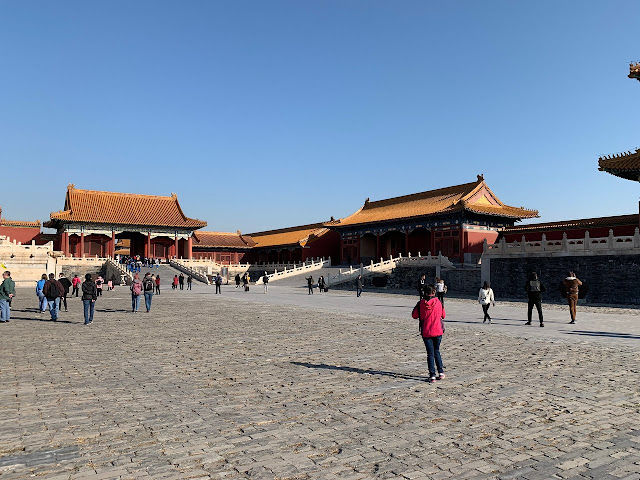






















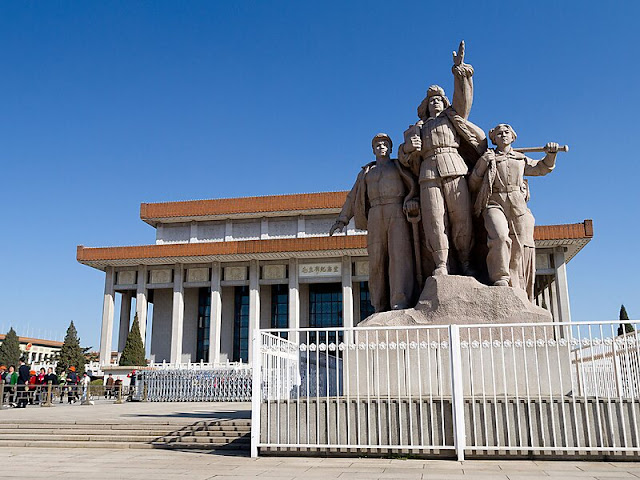




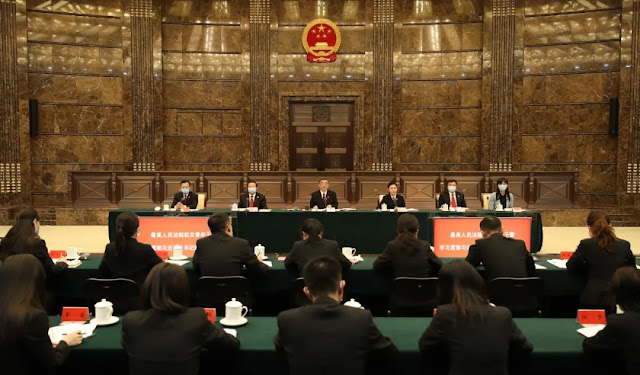



.jpeg)







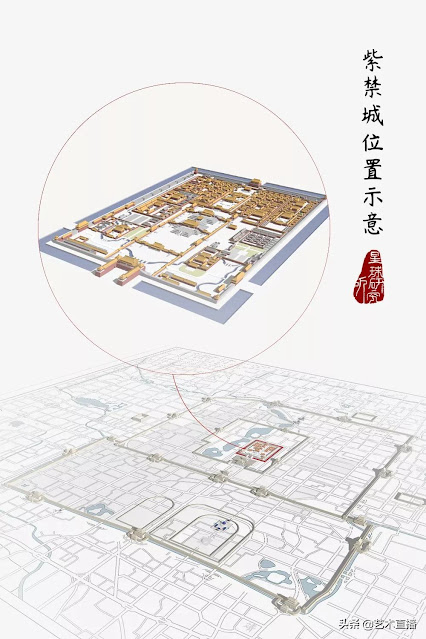


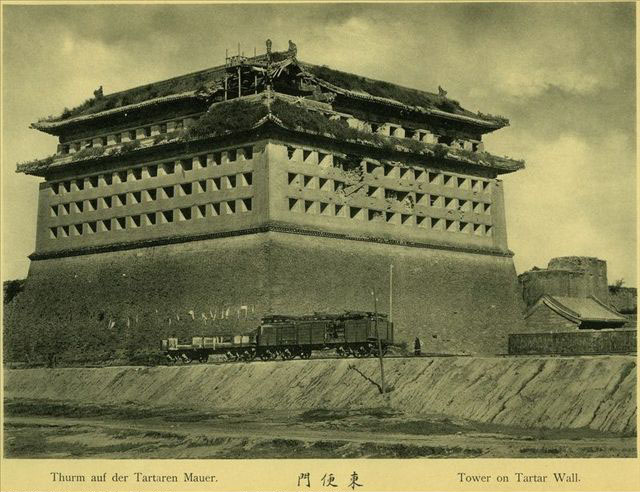
.jpg)




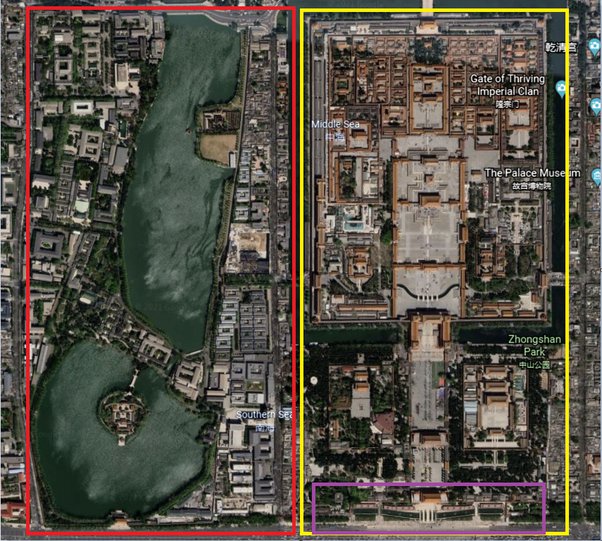


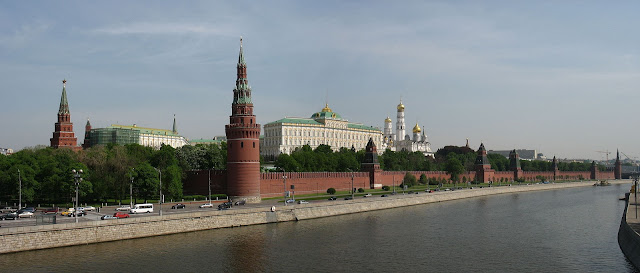
















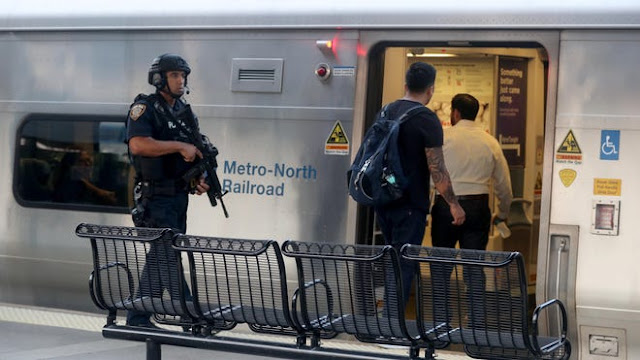


.jpg)


































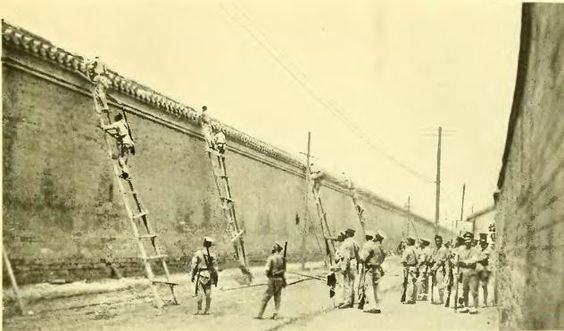






























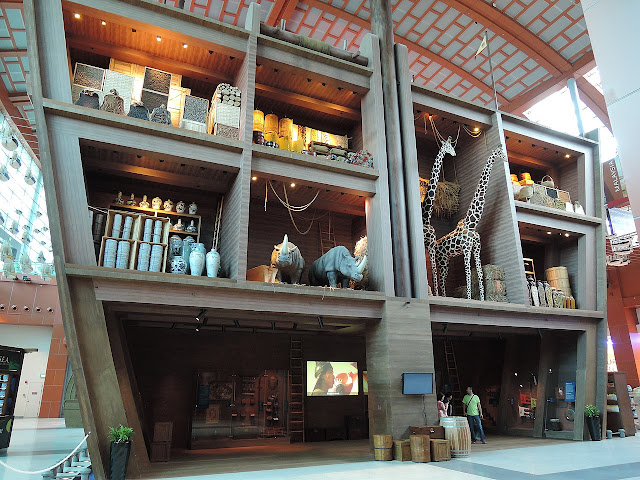


































































































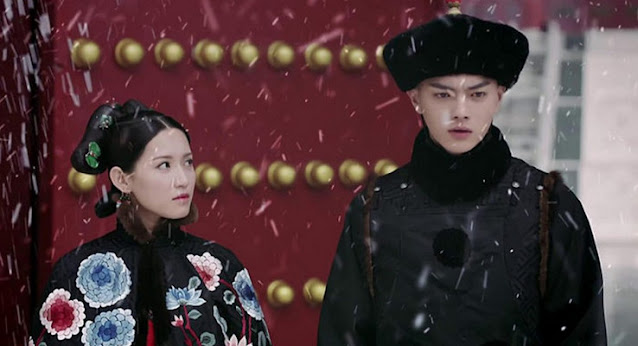
































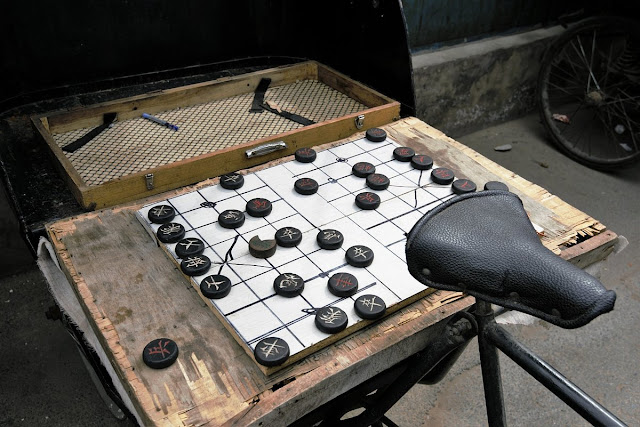








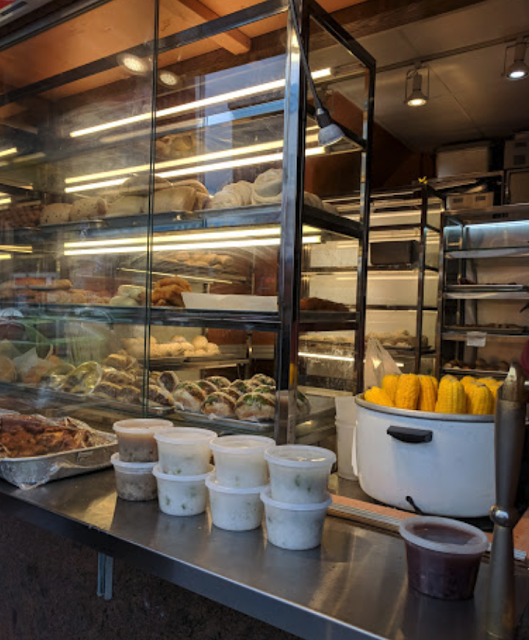























Sale on incense burners gifts also a complete set of gifts consists of variety of Incense Burner and easily delivered to you at your door step.
ReplyDelete